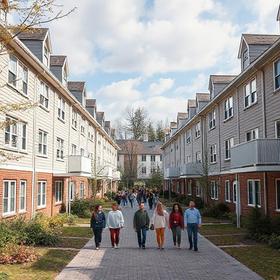How to Choose the Best Boarding School for Your Child:
10 Key Factors (2025 Guide)
Choosing the right boarding school can feel overwhelming. With over 300 boarding schools across the United States and dozens more internationally, families face a complex decision that blends academics, social development, finances, and long-term goals.
This 2025 guide outlines 10 essential factors parents should evaluate when selecting the best boarding school for their child.
1. Academic Programs and Rigor
Every child learns differently, and the best boarding school will align with your student’s strengths and ambitions.
College Preparatory Focus: Look for schools offering Advanced Placement (AP), International Baccalaureate (IB), or honors programs.
Specialized Tracks: Some schools emphasize STEM, arts, or global studies.
Learning Support: Ensure resources are available for students with learning differences.
According to the National Association of Independent Schools (NAIS), enrollment in specialized academic programs at boarding schools has risen steadily since 2020 (NAIS).
2. Faculty and Mentorship
Teachers at boarding schools often live on campus or serve as dorm parents, providing mentorship beyond the classroom. This unique dynamic fosters stronger teacher-student bonds compared to many day schools.
Ask about:
Student-to-teacher ratios (many are 6:1 to 8:1).
Teacher qualifications, including advanced degrees.
Faculty involvement in advising and extracurriculars.
3. Location and Campus Environment
Location impacts both daily life and long-term opportunities.
Urban campuses may offer cultural access, internships, and partnerships with local universities.
Rural campuses often provide expansive grounds, outdoor programs, and a quieter environment.
In 2025, schools are increasingly promoting sustainability initiatives—such as solar-powered dorms or climate research centers—making campus culture part of the decision.
4. Extracurricular and Enrichment Opportunities
Boarding schools emphasize a well-rounded education. Key offerings include:
Athletics (from varsity teams to niche sports like crew or fencing).
Arts programs (visual, music, theater, and digital media).
Clubs and leadership opportunities.
A robust extracurricular portfolio signals balance between academics and personal growth.
5. School Size and Community Feel
Boarding schools range from fewer than 100 to over 1,000 students.
Smaller schools (under 300) often provide intimate, family-like atmospheres.
Larger schools offer more diverse course offerings and peer groups.
Visiting campus or attending a virtual tour can help families gauge the school’s community culture.
6. Student Outcomes and College Placements
One of the most reliable indicators of a boarding school’s strength is its alumni success.
Look at:
College matriculation lists.
Acceptance rates to selective universities.
Career trajectories of recent graduates.
According to the U.S. Department of Education, college-bound students from boarding schools often report higher levels of independence and time-management readiness than peers from public schools (U.S. Department of Education).
7. Diversity and Global Perspective
In 2025, boarding schools have become increasingly diverse. International students now represent about 15–20% of enrollment at many U.S. schools, bringing cultural richness and global networks.
Families should ask about:
International student services.
Cultural exchange opportunities.
Diversity, equity, and inclusion initiatives.
8. Tuition, Financial Aid, and Affordability
Boarding school costs in 2025 typically range from $55,000 to $75,000 per year, though elite schools may exceed $80,000.
However, financial aid is widespread. NAIS reports that nearly 35% of boarding students receive some form of aid (NAIS). Many schools are committed to need-based packages that make education accessible to middle-income families.
9. Safety, Wellness, and Student Support
Parents should carefully review a school’s approach to:
Health and wellness services, including counseling and mental health resources.
Campus security measures (24/7 supervision, visitor policies, emergency protocols).
Advisory systems that give each student a trusted mentor or counselor.
The Wall Street Journal reported in 2024 that wellness programs are now a top priority for independent schools, reflecting rising awareness of teen mental health needs (Wall Street Journal).
10. The Right Fit: Visiting and Trusting Your Instincts
Ultimately, the decision comes down to your child’s personality and comfort. A school may be exceptional on paper but not the right match in person.
Tips for Visits:
Sit in on a class.
Eat a meal in the dining hall.
Talk to students about their daily routines.
Ask about dorm life and weekend programming.
As we emphasize in Boarding School vs. Private Day School: Which Is Right for Your Child?, fit matters as much as academics or prestige.
Summary Table: 10 Key Factors
| Factor | What to Look For (2025) |
|---|---|
| Academics | AP, IB, or specialized tracks; learning support |
| Faculty & Mentorship | Low ratios, advanced degrees, advisor roles |
| Location | Urban cultural access vs. rural outdoor focus |
| Extracurriculars | Athletics, arts, clubs, leadership |
| School Size | Small = intimacy; large = diversity of options |
| Outcomes & Placements | College lists, alumni success |
| Diversity & Global View | 15–20% international, DEI programs |
| Tuition & Aid | $55K–$75K typical; 35% receive aid |
| Wellness & Safety | Counseling, security, advisory systems |
| Fit & Visits | Campus tours, student interaction, dorm life evaluation |
Expert Perspective
Sarah Martinez, Director of Admissions at a New England boarding school, notes:
“The best boarding school is not necessarily the most famous—it’s the one where your child will feel supported, challenged, and inspired every day.”
Final Thoughts
Selecting a boarding school in 2025 is about finding balance: rigorous academics, robust extracurriculars, strong support systems, and the right cultural environment. By focusing on these 10 key factors, families can move beyond glossy brochures and rankings to find a school where their child will truly thrive.













